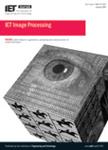版权所有:内蒙古大学图书馆 技术提供:维普资讯• 智图
内蒙古自治区呼和浩特市赛罕区大学西街235号 邮编: 010021

作者机构:Chonnam Natl Univ Sch Mech Engn 77 Yongbong Ro Gwangju 61186 South Korea
出 版 物:《IET IMAGE PROCESSING》 (IET影像处理)
年 卷 期:2019年第13卷第7期
页 面:1074-1080页
核心收录:
学科分类:0808[工学-电气工程] 1002[医学-临床医学] 08[工学] 0812[工学-计算机科学与技术(可授工学、理学学位)]
基 金:National Research Foundation of Korea (NRF) - Korean government (MSIP) [2016R1A2B3011947]
主 题:image reconstruction iterative methods interpolation computerised tomography medical image processing image sequences quality reconstruction projection sequences increase reconstruction quality computation time ordered subset-modified iterative technique optical flow-based frame interpolation consecutive projections optical flow technique degrade reconstruction quality CT image cyclic image processing projected images noisy data IR technique iterative reconstruction algorithms computation power X-ray computed tomography reconstruction high-quality
摘 要:Recent advances in computation power have allowed computed tomography (CT) to utilise iterative reconstruction (IR) algorithms. The IR technique can handle noisy data and reconstructs optimal CT images from limited projected images. As of cyclic image processing, IR improves the quality of CT images. This approach requires a minimum number of projections to reconstruct an image;however, decreasing the number of projections to 90 can create artefacts and degrade reconstruction quality. To overcome this limitation, the optical flow technique can compute flow vectors between two consecutive projections to generate projected images between frames. Here, optical flow-based frame interpolation combined with the ordered subset-modified iterative technique is proposed to reduce computation time, lower the number of projections, and increase reconstruction quality of CT images. The proposed technique can be used to reconstruct a CT image from 90 projections at 4 degree intervals between projection sequences. This approach produces a much better quality reconstruction compared to that produced by an analytical algorithm, which uses 360 projections. The inclusion of an ordered subset reconstructs CT images quickly by accelerating streaming architecture.